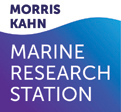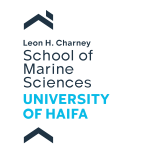Sediment Microbiome

Our data
The monitoring is carried out twice a year, along four depth transects (10, 25, 45, and 100 m). Two cores from each depth are taken by diving or box corer, and each core is sliced into a few layers (up to 10 cm). Then, DNA is extracted from each layer and analyzed in order to characterize the bacterial, archaeal and eukaryotic communities. The attached tables includes details of sampling (date, site, depth etc.) and taxonomy and relative abundance of bacterial / archaeal / eukaryote communities.
Sediment microbiome data
Oceans cover 70% of the Earth, while sedimentary habitats cover most of the ocean bottom (ranging from gravel to fine muds). Thus, by area, it is the largest ecosystem on Earth. Surface sediment bacteria play a significant ecological and biogeochemical role in marine ecosystems, due to their high abundance relative to the overlying water column and are key in the decomposition of the organic matter, nutrient and sulfur cycling, and carbon flux.
The microbial communities are very dynamic and sensitive and can rapidly change due to environmental changes. Therefore, characterization of the sediment microbiota may be used as an important tool for assessing environmental health and may indicate changes in the ecological system. As part of our long-term marine ecological research (LTER) program, we sampled the microbial communities (bacteria, archaea and eukaryote) along the continental shelf. We have started to sample at Sdot Yam, and we intend to expand the sampling area north and south of this site.
Our goals are (1) to characterize the sediment and create an initial database of sediment microbial communities, and (2) to develop an environmental microbial indicator, which will enable us to characterize site health and observe further changes following environmental changes and/or anthropogenic impacts.
Sediment microbiome data
Reference
If you find the data useful and use it for presentation or else, please credit us with a link to our site as follows:
Data from the Morris Kahn marine Research Station: https://med-lter.haifa.ac.il/
Contact us
For more information and assistance on this data, please contact:

